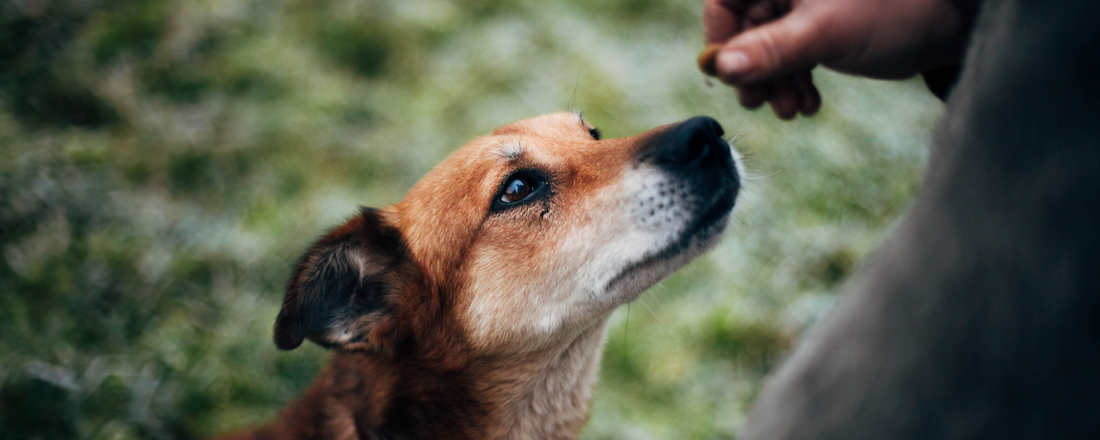Our Canines are more then just bundles of joy they have super powers, particularly when it comes to their sense of smell. Dogs possess one of the most powerful noses in the animal kingdom, and this extraordinary olfactory capability plays a crucial role in their daily lives, especially in how they choose what to eat.
In this blog post, we’ll delve into the fascinating world of canine olfaction, exploring how dogs use their noses to navigate their environment, identify potential food sources, and make dietary choices that ensure their health and well-being.

Dogs have about 1,700 taste buds, compared to roughly 9,000 in humans. While they can distinguish basic tastes such as sweet, sour, salty, and bitter, their limited taste buds mean that flavor perception is heavily reliant on their sense of smell.
The aromas of food contribute significantly to a dog's overall sensory experience, allowing them to "taste" food more through scent than through taste buds alone.
What Makes a Dog’s Nose Special
To understand how dogs use their noses to choose what to eat, it's essential to first appreciate the anatomy of their olfactory system. Dogs have up to 300 million olfactory receptors in their noses, compared to about 5 million in humans.

This vast number of receptors allows them to detect a wide range of scents at extremely low concentrations.
The dog's nose is divided into two parts: the respiratory system, which is responsible for breathing, and the olfactory system, dedicated to detecting odors. When a dog breathes, 12%-13% of that inhaled air goes to the olfactory epithelium -it is a thin layer of tissue that detects odor. These receptors send signals to the brain's olfactory bulb, which is proportionally 40 times larger in dogs than in humans, allowing for detailed scent analysis.
Other than that, dogs use their two nostrils for different occasions. This phenomenon is called sniffing lateralization, this is in relation with the information pathway of scents to the brain. Dogs primarily use their right nostril when they start sniffing. They also use their right nostril when they are disinclined. They use their left nostril when they are inclined or when they put their guard down.
For example, when dogs are eating or bonding with their human, they use their left nostril the most. But at times of imminent danger, our canine friends will switch to using their right nostrils.
Additionally, dogs possess a specialized organ called the Jacobson's organ, or Vomeronasal organ, located on the roof of their mouths. This organ detects pheromones and other chemical signals that provide additional information about the environment and potential food sources.
This organ helps dogs detect scents that are undetectable to us humans. Thus, dogs have been utilized to detect bombs and contrabands, sensing illnesses in humans like low blood sugar and seizures, and most importantly as an emotional support animal since dogs can also sense people’s emotions through their noses.
How Dogs Use Their Sense of Smell to Find Food
Dogs rely on their noses to locate food in various ways, whether they are hunting in the wild or sniffing out treats in your kitchen.

Here are some key aspects of how dogs use their sense of smell to find and choose what to eat:
1. Detecting Nutrient-Rich Foods
Dogs have evolved to seek out foods that provide the necessary nutrients for their survival. Their sense of smell helps them identify protein-rich foods like meat, which are essential for their diet. In the wild, dogs would use their noses to track down prey, following the scent of a potential meal over long distances.
2. Avoiding Spoiled or Toxic Foods
Dogs can also use their sense of smell to avoid spoiled or toxic foods. Their keen noses can detect the presence of bacteria and other harmful substances that might indicate food is unsafe to eat. This ability helps prevent them from consuming something that could make them ill.
3. Social Learning and Food Preferences
Dogs often learn about food preferences through social interactions with other dogs and humans. When they see other dogs or their human family members eating something, they may be more inclined to try it themselves. Their sense of smell plays a crucial role in this process, allowing them to identify the specific foods others are consuming and determine if they might be appealing.
4. Memory and Association
Dogs have an excellent sense of memory when it comes to scents. They can remember the smell of foods they have enjoyed in the past and seek them out again. This associative memory helps dogs distinguish between different foods and make choices based on past experiences.
The Role of Smell in Food Selection
While sight and taste are important senses for dogs, their sense of smell is the primary tool they use to evaluate food.

Here’s how smell influences their food selection process:
1. Identifying Palatable Foods
Dogs are naturally drawn to foods that smell appetizing. When presented with a new type of food, they will first sniff it to determine if it’s worth eating. A strong, appealing scent can indicate to the dog that the food is fresh and nutrient-dense.
2. Assessing Food Quality
Dogs can assess the quality of food through its smell. High-quality, natural ingredients have distinct aromas that dogs find appealing. Conversely, artificial additives or preservatives can produce smells that dogs might find off-putting.
3. Determining Satiety and Satisfaction
The smell of food can also affect a dog’s sense of satiety and satisfaction. Aromas that mimic those of a dog’s natural diet can trigger a stronger feeding response, encouraging them to eat more and feel satisfied. This is why many premium pet foods are designed with palatability in mind, using natural flavors and high-quality ingredients to create an enticing aroma.
4. Emotional and Behavioral Responses
The sense of smell is closely linked to the emotional centers of the brain. Pleasant food smells can evoke positive emotions in dogs, making mealtime a more enjoyable experience. Conversely, unpleasant odors can lead to aversion and refusal to eat.
Practical Tips for Pet Owners
Understanding how dogs use their sense of smell to choose what to eat can help pet owners make better decisions about their pets’ diets.

Here are some practical tips:
1. Choose High-Quality Foods
Opt for pet foods that use natural, high-quality ingredients without artificial additives. These foods are more likely to have appealing aromas that your dog will enjoy.
2. Pay Attention to Food Preferences
Observe your dog’s reactions to different foods and take note of their preferences. If your dog consistently shows a preference for certain scents or flavors, try to incorporate those into their diet.
Do not feed table food as these foods are not only harmful to dogs but these also
contain condiments that releases aromas pleasing to dogs which will make them prefer eating table food more than their own dog food.
3. Avoid Strong-Smelling Chemicals
Keep strong-smelling chemicals and cleaning agents away from your dog’s food and feeding area. These smells can overpower the natural aroma of the food and deter your dog from eating.
4. Use Scent to Encourage Eating
If your dog is a picky eater, try warming their food slightly to enhance its aroma. You can also add a small amount of warm water or broth to dry kibble to release more scent.
Don’t immediately change their diet once your pet starts showing signs of being a picky-eater. Try to enhance their food first by incorporating healthy aromatic foods like boiled meats.
5. Create a Positive Feeding Environment
Ensure your dog’s feeding area is calm and free from stressors. A relaxed environment can help your dog focus on the smell and taste of their food, making mealtime more enjoyable.
Conclusion
Olfaction in dogs possess a great function to them in terms of gathering information of the environment they are in, sensing danger, bonding, and locating food.
Dogs have an extraordinary sense of smell that significantly influences their food choices. By understanding how dogs use their noses to navigate their dietary preferences, pet owners can make informed decisions that enhance their pets’ overall health and well-being.

Choosing high-quality, aromatic foods and paying attention to your dog’s preferences can help ensure they enjoy their meals and receive the nutrition they need to thrive.


